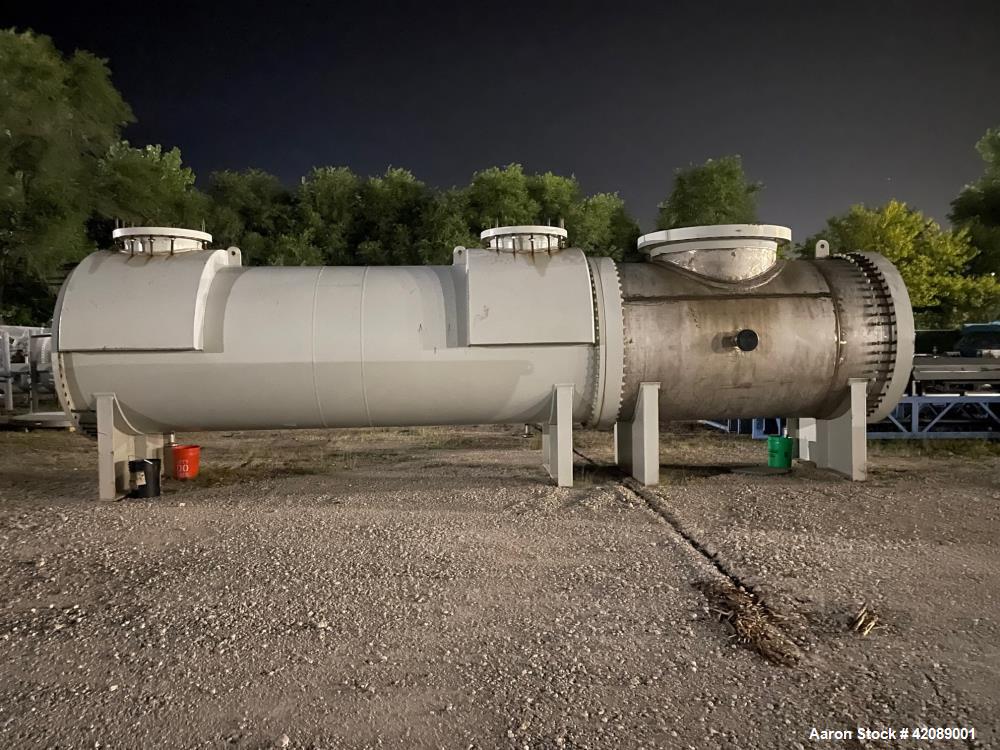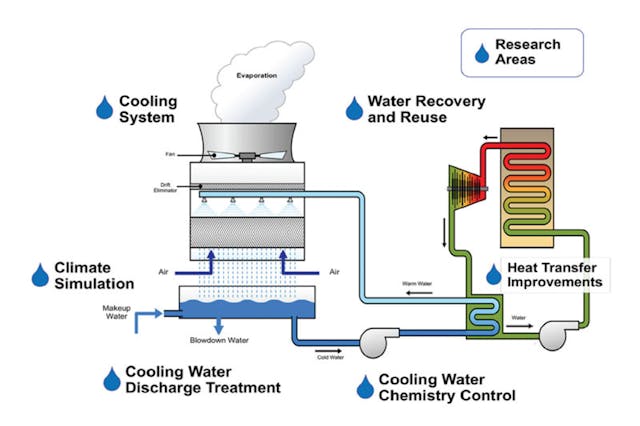Checklist: What to Know Before Implementing DVS Heat Transfer Systems in HVAC Systems
Checking out the Conveniences and Applications of Heat Transfer Systems in Modern Market
Heat transfer systems play an important role in modern sector. They encompass numerous systems such as conduction, radiation, and convection, each contributing to effective thermal monitoring. Industries like production and aerospace advantage significantly from these systems. As advancements proceed, the integration of cutting-edge materials and technologies guarantees to improve energy performance. This advancement increases vital questions about the future implications for sustainability and functional expenses across several markets. What exists ahead in this ongoing transformation?
Comprehending Heat Transfer Principles
Heat transfer principles are essential to the procedure of various commercial systems. These concepts include the systems of convection, conduction, and radiation, each playing a crucial duty in managing thermal energy. Comprehending conduction entails evaluating how Heat moves through strong materials, while convection pertains to Heat transfer in fluids, driven by fluid movement. Radiation, unique from the other 2, includes power transfer via electromagnetic waves. The efficiency of Heat transfer impacts system efficiency, energy usage, and overall productivity. Reliable thermal administration is essential in processes such as Heat, home heating, and air conditioning recuperation. By grasping these concepts, industries can enhance their operations, decrease energy costs, and boost devices longevity, thereby adding to a more reliable and sustainable commercial landscape.
Secret Kinds of Heat Transfer Solutions
While various markets utilize Heat transfer systems for varied applications, numerous key types stick out as a result of their details functions and effectiveness. The most typical kinds include conduction, radiation, and convection systems. Conduction systems transfer Heat with straight contact in between materials, making them efficient in solid-state applications. Convection systems, on the various other hand, make use of liquid motion to transfer Heat, suitable for home heating or cooling gases and liquids. Radiation systems run without a medium, relying on electromagnetic waves to move Heat, perfect for high-temperature settings. Each kind offers distinctive functions, allowing industries to tailor their Heat transfer options based on operational needs, power performance, and cost-effectiveness. Recognizing these systems is vital for maximizing efficiency in different commercial setups.
Industrial Applications of Heat Transfer Technologies
The application of Heat transfer innovations in market plays a vital function in boosting energy efficiency and enhancing procedures. DVS Heat Transfer Systems. By implementing innovative Heat exchange systems, firms can considerably minimize their ecological impact while boosting total performance. This combination not only fosters sustainability however likewise aligns with contemporary regulative and customer needs for greener practices
Energy Performance Improvements
As industries increasingly focus on sustainability, energy efficiency renovations in Heat transfer technologies have come to be vital for decreasing operational costs and environmental impact. Boosted Heat exchangers, as an example, use innovative materials and layouts to optimize thermal performance while reducing energy usage. Integrating variable speed drives in pumping systems enables for far better control of liquid circulation, leading to considerable power financial savings. The implementation of smart sensors and automation supplies real-time surveillance, making it possible for adjustments that maximize energy use. Furthermore, waste Heat healing systems catch excess thermal power, transforming it right into functional power. These innovations not just improve power efficiency yet likewise add to a much more sustainable commercial landscape by lowering greenhouse gas exhausts and sustaining conformity with environmental guidelines.
Process Optimization Techniques
Refine optimization techniques are vital in enhancing the efficiency and performance of Heat transfer technologies in commercial applications. These methods involve refining processes to optimize Heat transfer performance while decreasing energy intake and operational prices. Approaches such as computational liquid characteristics (CFD) modeling allow designers to evaluate and mimic Heat transfer circumstances, recognizing locations for renovation. Furthermore, real-time monitoring systems can offer beneficial data on temperature level slopes and flow prices, allowing adjustments that optimize performance. Carrying out sophisticated control methods, such as predictive analytics, can boost system responsiveness to varying functional demands. By using these optimization methods, sectors can achieve better thermal effectiveness, reduced downtime, and enhanced product high quality, ultimately causing increased competition in the marketplace.

Ecological Impact Reduction
While industrial Heat transfer technologies are crucial for operational efficiency, their application additionally presents chances for substantial environmental effect decrease. By improving energy effectiveness, these systems lessen fuel usage, bring about lower greenhouse gas discharges. For circumstances, advanced Heat exchangers can recover site waste Heat, rerouting it to preheat inbound fluids, thus lowering power needs. Additionally, the assimilation of Heat transfer technologies in renewable resource systems, such as solar thermal and geothermal applications, sustains the shift to sustainable techniques. Industries that employ these technologies also gain from reduced functional costs and enhanced regulatory conformity. Generally, the strategic implementation of Heat transfer systems not just boosts efficiency however likewise fosters a much more lasting commercial landscape, adding to worldwide ecological objectives.
Advantages of Reliable Heat Transfer Solutions
Reliable Heat transfer systems offer substantial advantages in contemporary industry, primarily with enhanced power performance and price decrease. By maximizing thermal administration, these systems lessen energy waste, resulting in reduced operational costs (DVS Heat Transfer Systems). Services can achieve better sustainability and enhanced profitability.

Power Performance Improvements
As sectors increasingly prioritize sustainability and cost-effectiveness, energy efficiency enhancements in Heat transfer systems have actually arised as a crucial emphasis. Boosted effectiveness in these systems results in minimized power intake, making it possible for centers to run even more sustainably. By maximizing Heat transfer approaches, sectors can decrease waste Heat and accomplish much better thermal administration, considerably reducing their environmental impact. Advances in technologies such as Heat exchangers and insulation products add to boosted efficiency and dependability. Executing energy-efficient Heat transfer remedies not just supports conformity with governing requirements but additionally promotes a culture of technology within companies. Ultimately, these improvements are important in straightening industrial operations with international energy conservation objectives, leading the way for a more sustainable future in production and processing fields.
Expense Decrease Opportunities
By enhancing Heat transfer systems, sectors can expose substantial expense decrease chances that boost their lower line. Reliable Heat transfer reduces power consumption, causing lower energy bills and reducing operational expenditures. Additionally, boosted system performance reduces the demand for repair and maintenance, furthermore saving prices over time. Enhanced Heat transfer can also prolong tools life expectancy, allowing business to postpone capital investment on substitutes. Waste Heat healing systems can transform excess Heat right into functional power, further driving down expenses. These systems not just simplify procedures but likewise add to sustainability campaigns, positioning business positively in an increasingly eco-conscious market. In general, the economic advantages of reliable Heat transfer systems are significant and important for competitive benefit.
Advancements in Heat Transfer Solutions
Just how can modern-day sector boost its procedures with ingenious Heat transfer options? By taking on innovative products and modern technologies, sectors can greatly improve thermal efficiency and efficiency. Advancements such as nanofluids, which enhance Heat transfer capacities past description traditional fluids, and stage adjustment products that save and launch thermal power, are gaining grip. In addition, the combination of wise sensors and IoT devices permits real-time surveillance and optimization of Heat transfer processes, minimizing waste and enhancing system responsiveness. In addition, additive production methods enable the creation of even more complicated Heat exchangers that optimize area while reducing material use. Jointly, these technologies drive operational efficiency and produce affordable advantages in different fields, consisting of energy, production, and aerospace.
The Function of Heat Transfer in Sustainability Initiatives
While the promote sustainability remains to improve sectors, the duty of Heat transfer innovations comes to be progressively important in attaining environmental objectives. Efficient Heat transfer systems help with power effectiveness by maximizing thermal administration in various procedures, significantly reducing energy usage and greenhouse gas exhausts. As an example, progressed Heat exchangers are made use of in industrial applications to recover waste Heat, thereby reducing power waste. In addition, innovations such as phase modification products improve thermal storage space, adding to renewable resource assimilation. Moreover, the adoption of sustainable fluids in Heat transfer systems can minimize ecological impact. By focusing on effective Heat transfer, markets not just boost functional efficiency yet also align with global sustainability initiatives, fostering a cleaner, much more sustainable future.
Frequently Asked Questions
Exactly How Do Heat Transfer Solutions Effect Energy Expenses in Manufacturing?
Heat transfer systems considerably influence energy prices in manufacturing by boosting performance, decreasing waste, and enhancing thermal administration. These improvements result in lower operational expenses, ultimately benefiting total performance and profitability in industrial operations.
What Upkeep Is Needed for Heat Transfer Systems?
Upkeep for Heat transfer systems includes normal examinations, cleaning of parts, checking fluid levels and conditions, changing worn parts, and making certain correct insulation. These actions enhance performance, prolong lifespan, and avoid costly breakdowns in procedure.
Are There Safety And Security Interest In Heat Transfer Equipments?
Security worries with Heat transfer systems consist of prospective leakages, pressure build-up, find out and thermal threats. Proper style, normal maintenance, and adherence to safety and security protocols are necessary to reduce these dangers and assure safe procedure in commercial environments.
Exactly How Can I Pick the Right Heat Transfer System for My Business?
Selecting the appropriate Heat transfer system involves examining aspects such as efficiency, application demands, spending plan constraints, and security criteria. A detailed analysis of these aspects will certainly help ensure excellent performance and dependability in service procedures.
What Prevail Failings in Heat Transfer Systems and Their Causes?

Understanding conduction entails analyzing exactly how Heat moves with strong materials, while convection pertains to Heat transfer in fluids, driven by liquid activity. By optimizing Heat transfer approaches, sectors can minimize waste Heat and accomplish far better thermal management, considerably decreasing their environmental effect. Waste Heat recovery systems can change excess Heat right into functional power, even more driving down expenses. Progressed Heat exchangers are made use of in industrial applications to reclaim waste Heat, therefore minimizing energy waste. Typical failings in Heat transfer systems include leakages, rust, and ineffective Heat exchange.